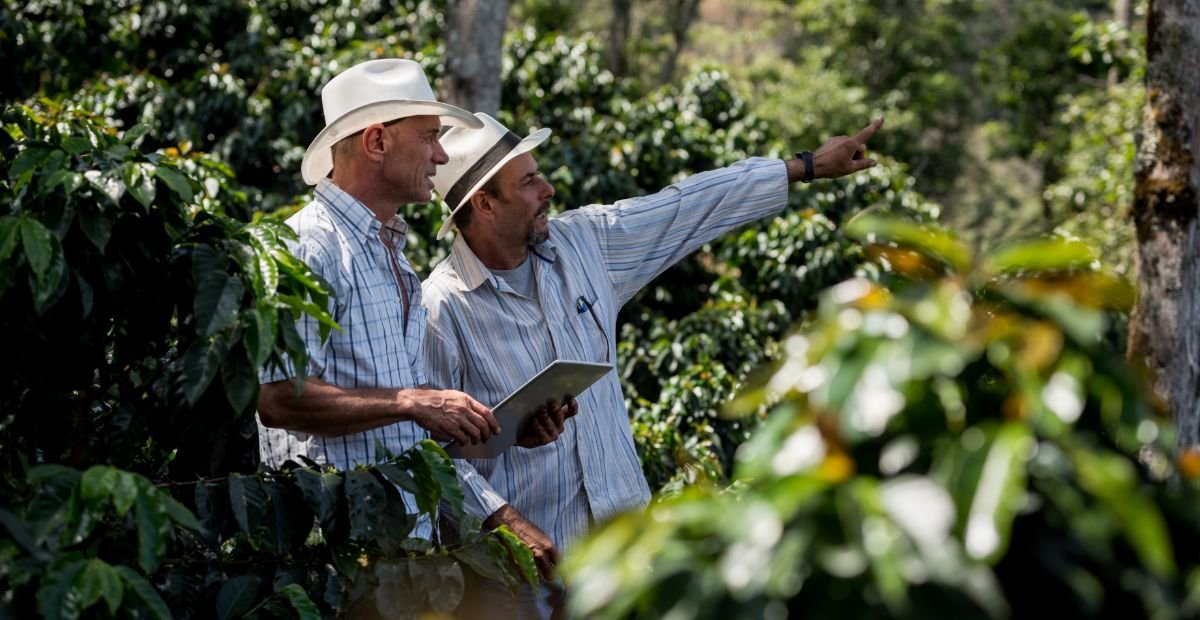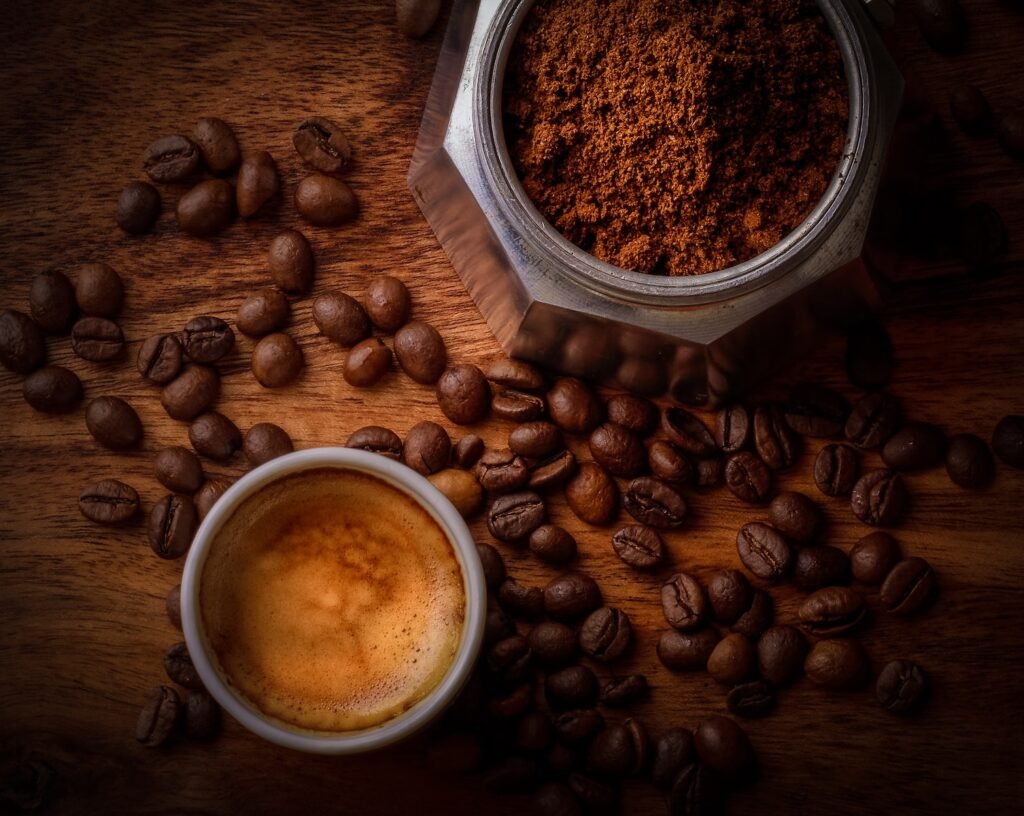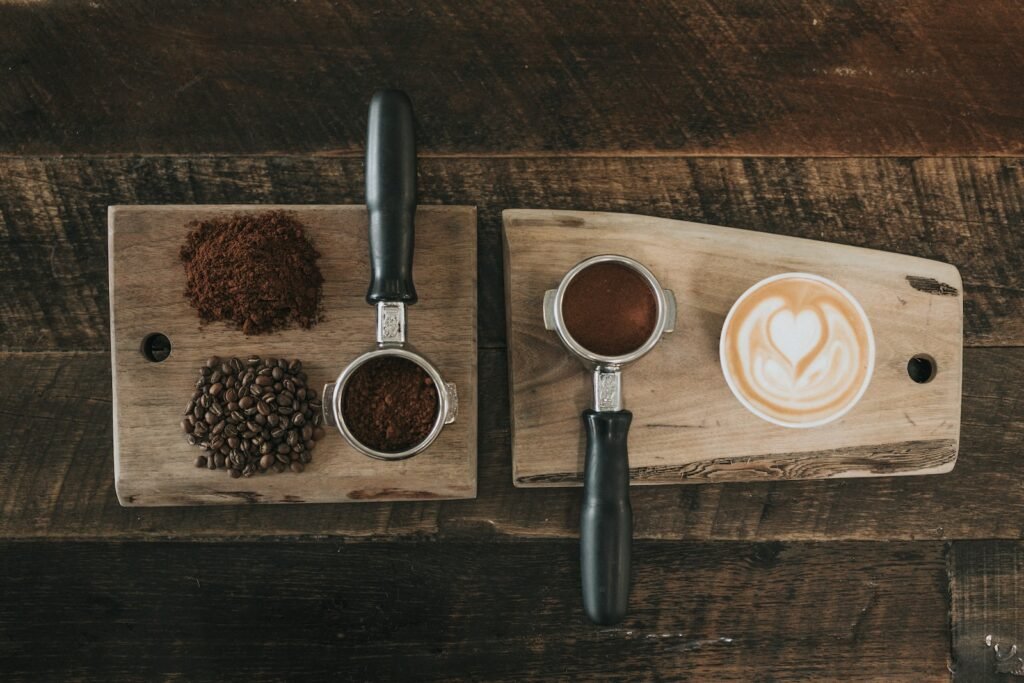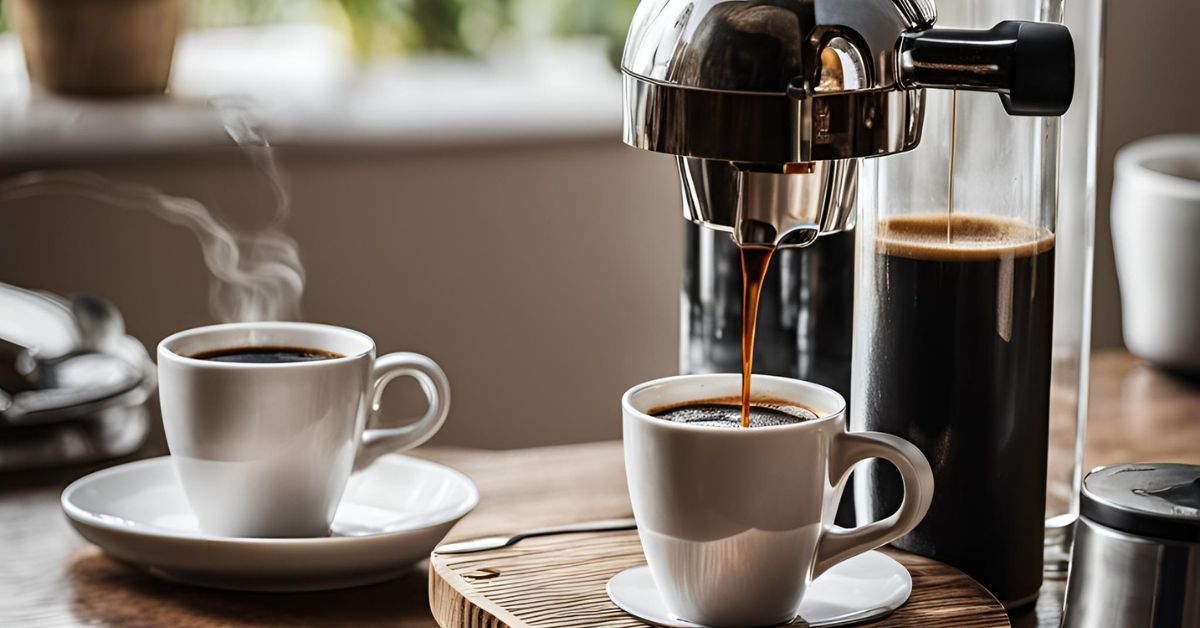American Coffee vs Australian Coffee: How Do They Differ?

Coffee has become an integral part of modern society, enjoyed by millions worldwide in various forms and flavors. While Italy is often lauded for its espresso culture and Europe for its café culture, two countries that stand out in the coffee world are the United States and Australia. Both nations have developed unique coffee cultures, each with its distinct characteristics and preferences.
In this blog post, we’ll explore the key differences between American coffee vs Australian coffee to help you appreciate the diversity in coffee culture across the globe. Moreover, we’ll delve into the world of coffee tastes, and the coffee brewing methods commonly used in these two countries and compare their brewing techniques.
Furthermore, we’ll delve into coffee sizes and prices in Australia, compare Australian and American coffee dispensaries, and discuss the influence of Starbucks on coffee culture.

Coffee Culture Comparison
Coffee, the energy elixir, has sparked a global obsession that transcends borders. It’s a daily ritual, a source of comfort, and a symbol of culture in many parts of the world.
How Do Australians Drink Their Coffee?
Australians take their coffee seriously, with a preference for quality over quantity. The Australian coffee scene places an emphasis on the art of coffee brewing and a strong, robust flavor profile. It’s all about the espresso. Australians favor espresso-based drinks like the flat white, piccolo, and long black, each crafted with precision by skilled baristas.
Milk plays a crucial role in Australian coffee culture. Locally sourced, full-fat milk is preferred for its creamy texture and ability to create exquisite latte art. The focus here is on extracting the perfect shot of espresso, which forms the foundation of these flavorful creations.
Australian Coffee Culture
Australian coffee culture extends beyond just the brew. It’s a social affair. Coffee shops often serve as community hubs where friends gather to catch up, study, or enjoy a peaceful moment. This cultural aspect of Australian coffee houses fosters a warm and welcoming atmosphere that enhances the coffee experience.
Australian Starbucks Failure
Interestingly, the Australian coffee market posed a unique challenge to the global coffee giant, Starbucks. When Starbucks expanded into Australia, it faced fierce competition from the well-established and quality-focused local coffee shops.
Australians, accustomed to their favorite local cafés, didn’t readily embrace the American chain. Starbucks struggled to adapt to the Australian coffee culture and eventually had to close many of its stores. This event underscores the significance of understanding and respecting local coffee customs.
The Future of American Coffee
As we look ahead, the American coffee scene continues to evolve. While convenience and customization remain at the forefront, there’s a growing appreciation for specialty coffee. Artisanal coffee shops are popping up across the nation, offering single-origin beans, pour-over brews, and a deeper exploration of coffee origins.
The desire for sustainability also drives change, with more Americans embracing eco-friendly coffee practices, such as fair trade and ethically sourced beans.
In conclusion, the comparison of American and Australian coffee cultures reveals the dynamic and diverse nature of our shared coffee obsession. While the United States celebrates convenience and personalization, Australia emphasizes quality, espresso, and community. Starbucks’ Australian struggle serves as a reminder that respecting local customs is crucial in the ever-evolving world of coffee.
The future of American coffee appears promising, with a shift towards a greater appreciation for specialty coffee and a more sustainable coffee culture. As coffee continues to captivate our taste buds and hearts, the world of coffee culture will undoubtedly keep evolving, surprising us with new flavors and experiences.
Coffee Quality and Taste
Coffee is not just a beverage; it’s a symphony of flavors and aromas that can vary significantly based on factors like origin, processing, and preparation methods. The quality and taste of coffee are deeply intertwined, making it an exciting exploration for coffee connoisseurs and enthusiasts alike.
Australian Coffee Tastes
In Australia, coffee is an art form, and the taste is paramount. Australians have cultivated a deep appreciation for the rich, bold flavors of espresso-based coffee. The flat white, a beloved Australian invention, exemplifies this preference. It combines a shot of espresso with silky microfoam milk, creating a velvety texture and a well-balanced, robust flavor.
Australians tend to prefer a darker roast profile, which enhances the coffee’s natural bitterness and full-bodied character. The focus is on the coffee’s natural taste, with minimal additives or flavorings. This preference for simplicity allows the coffee’s inherent qualities to shine.
Australian Coffee vs. American Coffee Tastes
When comparing Australian and American coffee tastes, several key distinctions emerge:
- Intensity: Australian coffee is known for its intensity. The emphasis on espresso and darker roast profiles results in a bolder, more robust flavor. In contrast, American coffee, particularly drip coffee, tends to be milder and less intense due to its lighter roast and larger serving sizes.
- Milk Ratio: Australians excel at achieving the perfect milk-to-coffee ratio, resulting in a creamy and balanced cup. In the United States, coffee often has a higher milk-to-coffee ratio in popular drinks like lattes and cappuccinos, which can dilute the coffee’s flavor.
- Roast Profile: Australians favor a darker roast, which imparts a smoky, slightly bitter note to their coffee. American coffee roasters tend to experiment with a wider range of roast profiles, allowing for more diversity in flavor profiles.
- Flavor Additions: American coffee culture is more inclined towards flavor additions, with a vast array of syrups, sweeteners, and flavored creamers available. This customization caters to diverse taste preferences but can mask the coffee’s natural flavors.
Cultural Factors Influencing Coffee Flavors
The taste preferences in coffee are heavily influenced by cultural factors:
- Historical Roots: The historical coffee preferences of a region can leave a lasting impact. For example, Italian immigrants greatly influenced the American coffee scene, leading to a strong espresso culture in certain regions.
- Café Culture: The café culture in a country plays a significant role in shaping taste preferences. In Australia, the café is a gathering place, fostering an appreciation for quality coffee. In the U.S., where coffee often serves as a quick energy boost, convenience and customization take precedence.
- Local Ingredients: The availability of local ingredients can also shape coffee flavors. In Australia, access to high-quality, locally sourced milk contributes to the creamy texture and rich taste of their coffee.
- Global Trends: Global coffee trends, such as the third-wave coffee movement, have led to a greater emphasis on origin, processing, and sustainability, influencing the taste preferences of coffee consumers worldwide.
Coffee Brewing Methods
Coffee enthusiasts around the world understand that the choice of brewing method can dramatically impact the flavor and aroma of their favorite beverage. Both Australia and the United States have developed their unique coffee brewing methods, each reflecting the cultural nuances and preferences of their respective societies.
Australian Coffee Brewing Methods
- Espresso Machines: Australians are renowned for their love of espresso-based coffee. Espresso machines are the heart of most Australian coffee shops, enabling baristas to extract rich, concentrated shots of coffee. These shots form the foundation for popular drinks like the flat white, latte, and cappuccino.
- Aeropress: The Aeropress has gained popularity in Australia as a home brewing method. It allows coffee enthusiasts to brew a single cup of coffee with precision. The result is a clean and flavorful cup with a full body, resembling the intensity of espresso.
- full bodyPour-Over: While less common in Australia compared to espresso, pour-over coffee has found its niche among those who appreciate the delicate nuances of single-origin beans. It’s a method that highlights the coffee’s unique flavor profile, resulting in a clean and aromatic cup.
American Coffee Brewing Methods
- Drip Coffee: Drip coffee reigns supreme in the United States. It’s a simple and convenient method that involves water passing through ground coffee beans in a filter. The result is a mild and approachable cup of coffee, often served in larger quantities.
- French Press: The French press is a popular brewing method in American homes. It allows for a full immersion of coffee grounds in hot water, resulting in a rich and bold flavor. The absence of paper filters means the oils and sediment from the coffee beans are retained, adding to the robustness of the brew.
- Cold Brew: Cold brew has gained a devoted following in the United States. It involves steeping coarsely ground coffee beans in cold water for an extended period, usually 12-24 hours. The result is a smooth, less acidic coffee concentrate that is often diluted with water or milk.
Brewing Techniques Comparison
When comparing Australian and American coffee brewing techniques, several key distinctions emerge:
- Intensity: Australian methods, particularly espresso-based drinks, tend to produce coffee with a more intense and robust flavor. American methods, like drip coffee, result in milder, less concentrated brews.
- Customization: American coffee culture places a strong emphasis on customization. Coffee drinkers can add syrups, creamers, and a variety of flavorings to tailor their coffee to their liking. Australian coffee is typically less customizable, with an emphasis on the natural coffee flavor.
- Serving Sizes: American coffee servings are often larger compared to the smaller, concentrated cups commonly served in Australia. This reflects the fast-paced American lifestyle and preference for larger portions.
- Cultural Influences: The choice of brewing method in each country is influenced by cultural factors and the historical development of their coffee cultures. Australia’s focus on espresso-based drinks aligns with its café culture, while America’s love for drip coffee is rooted in its history of convenience and mass production.

Coffee Sizes, Prices, and Dispensaries
Coffee is not only about the taste and brewing methods; it’s also about the experience, the sizes, the prices, and where you get your daily dose.
Australian Coffee Sizes and Prices
In Australia, coffee sizes are typically smaller compared to their American counterparts. The standard coffee sizes you’ll find include:
- Piccolo (Small): Around 3-4 ounces, it’s a shot of espresso with a small amount of milk. A budget-friendly option.
- Regular (Small-Medium): Approximately 6-8 ounces, this size is popular for flat whites and lattes. Prices range from $3 to $4.50 AUD.
- Large (Medium-Large): Typically 12 ounces, it’s a generous serving. Prices can vary from $4 to $6 AUD.
- Extra Large: While less common, some places offer sizes up to 16 ounces. Prices may range from $5 to $7 AUD or more.
Coffee prices in Australia are often higher compared to many other countries due to factors like the high cost of living, quality ingredients, and skilled baristas. The emphasis is on quality over quantity, with a focus on well-brewed, flavorful coffee.
Australian vs. American Coffee Dispensaries
- Australian Coffee Dispensaries: Australian coffee shops, often referred to as “cafés,” are known for their relaxed and inviting ambiance. These establishments prioritize quality over speed, fostering a culture of savoring coffee. Baristas are well-trained, and coffee is often brewed to perfection. You’ll find a wide range of espresso-based drinks on the menu, and latte art is a common practice.
- American Coffee Dispensaries: In the United States, coffee dispensaries come in various forms, from specialty coffee shops to fast-food chains. Speed and convenience are paramount, aligning with the fast-paced American lifestyle. Drive-thrus and to-go options are prevalent, and customization is key. Coffee choices are abundant, with an array of syrups, flavorings, and milk alternatives to cater to diverse tastes.
Starbucks’s Influence on Coffee Culture
Starbucks, the global coffee giant, has played a substantial role in shaping coffee culture, both in the United States and internationally:
- American Coffee Culture: Starbucks introduced Americans to the concept of the “coffeehouse” experience, where people could linger, work, or socialize while enjoying their favorite brew. The brand popularized terms like “latte” and “cappuccino,” making espresso-based drinks more accessible.
- International Expansion: Starbucks ventured into international markets, including Australia. However, it faced challenges in Australia, where the established coffee culture favored local cafes and smaller, independent roasters. Many Starbucks stores in Australia eventually closed due to this stiff competition.
- Influence on Convenience: Starbucks’s emphasis on convenience and consistency influenced the development of to-go coffee culture worldwide. Its signature Frappuccinos and seasonal offerings also contributed to the trend of coffee as a lifestyle choice rather than just a beverage.
The Influence of Melbourne: The Coffee Capital
When it comes to coffee culture, Melbourne stands out as a global powerhouse. This Australian city has carved its niche as the ultimate coffee destination, setting the bar high for coffee enthusiasts worldwide.
Australian Coffee Culture in Melbourne
Melbourne’s coffee culture is a rich tapestry of flavors, brewing methods, and passionate baristas. Key elements of the Melbourne coffee experience include:
- Third-Wave Coffee: Melbourne is at the forefront of the third-wave coffee movement, where coffee is treated as an artisanal product, emphasizing the origin and quality of beans.
- Diverse Brewing Methods: Melbourne’s cafes offer a plethora of brewing methods, from espresso and pour-over to AeroPress and siphon. Each method highlights different flavor profiles, catering to a variety of tastes.
- Specialty Coffee Roasters: The city is home to numerous specialty coffee roasters, known for sourcing high-quality, ethically traded beans and roasting them to perfection.
- Café Culture: Melbourne’s cafes are more than just places to grab a quick cup of coffee. They serve as community hubs where people gather to socialize, work, and savor every sip.
Australian Cafes in New York
The influence of Melbourne’s coffee culture has transcended international borders, with Australian-style cafes gaining popularity in cities like New York. These cafes bring a taste of Melbourne’s coffee experience to a global audience. Some common characteristics of Australian cafes in New York include:
- Flat Whites and Other Aussie Favorites: Australian cafes often introduce New Yorkers to Australian classics like flat white, long black, and avocado toast.
- Quality Over Quantity: Like in Melbourne, these cafes prioritize quality coffee over large servings, focusing on perfectly brewed cups that emphasize the bean’s natural flavors.
- Casual and Relaxed Atmosphere: Australian cafes in New York aim to recreate the cozy and inviting ambiance that characterizes Melbourne’s coffee scene.
Bluestone Lane Coffee: An Australian Cafe Chain
Bluestone Lane Coffee is a prominent example of an Australian-inspired cafe chain that has made a significant impact in the United States, particularly in New York City.
Founded by an Australian, Nicholas Stone, Bluestone Lane aims to bring the Melbourne coffee culture to American consumers. The chain is known for its commitment to quality coffee, fresh and wholesome food offerings, and a welcoming cafe atmosphere.
Comparison of Coffee Shops in Melbourne and the US
When comparing coffee shops in Melbourne and the United States, several distinctions become evident:
- Brewing Methods: Melbourne’s coffee scene is diverse, with an emphasis on specialty brewing methods. In the U.S., traditional drip coffee remains popular, but there is a growing interest in specialty coffee and methods like pour-over and cold brew.
- Size and Customization: American coffee servings are often larger, with an emphasis on customization through syrups and flavorings. Melbourne’s cafes focus on smaller, high-quality servings with less customization.
- Café Culture: Melbourne’s cafes prioritize a relaxed, communal atmosphere. American coffee shops vary widely in ambiance, from quick-service chains to cozy, independent cafes.

Baristas and Coffee Expertise
In the realm of coffee culture, baristas are the unsung heroes who transform beans into liquid art. They are the ones who elevate the coffee experience from a mere caffeine fix to a sensory journey.
Role of Baristas in Australian Coffee Culture
Baristas are the heart and soul of Australian coffee culture. They are more than just coffee makers; they are skilled artisans who master the craft of brewing coffee to perfection. Here’s why baristas hold such a pivotal role:
- Coffee Quality: Baristas are responsible for selecting the finest beans, grinding them to the right consistency, and expertly extracting the coffee. They play a crucial role in maintaining the quality and consistency of the brew.
- Flavor Profiling: Knowledgeable baristas understand the intricate flavors of different coffee beans. They can identify tasting notes and create a balanced cup that highlights the unique characteristics of the bean.
- Latte Art: Latte art is a hallmark of Australian coffee culture. Baristas take pride in creating intricate designs with milk foam, turning each cup into a work of art. This not only enhances the visual appeal but also adds to the overall experience.
- Customer Interaction: Baristas often have a close relationship with their regular customers, remembering their preferences and even their names. This personalized touch adds a sense of community to the coffee shop experience.
The Art of Making a Perfect Flat White
A flat white is an iconic Australian coffee creation that showcases the expertise of a skilled barista. Here’s a glimpse into the art of crafting a perfect flat white:
- Ingredients: Start with high-quality espresso made from freshly ground beans and fresh, cold milk.
- Steaming Milk: The milk must be steamed to a silky microfoam consistency. This involves heating the milk while introducing air to create a velvety texture.
- Espresso Shot: Pull a perfect shot of espresso, aiming for a balanced extraction with a rich crema.
- The Pour: The key to a flat white is the perfect balance of coffee and milk. The milk is poured into the espresso, creating a smooth and creamy mixture. The barista’s skill shines here, as they pour to achieve the ideal microfoam-to-coffee ratio.
- Latte Art: To finish, the barista may add a beautiful design to the top of the flat white, often in the form of a heart or rosette.
The Rise of Specialty Baristas in Australia
In recent years, Australia has seen the emergence of specialty baristas who take their expertise to the next level. These baristas are passionate about exploring new coffee origins, experimenting with brewing techniques, and participating in coffee competitions to showcase their skills.
Specialty baristas are often associated with small, independent coffee shops that focus on single-origin beans and meticulous brewing methods. They have an in-depth knowledge of the coffee supply chain, from bean sourcing and roasting to brewing and serving.
Australian Coffee Market Share
The Australian coffee market has experienced remarkable growth and transformation over the years, carving out its unique niche in the global coffee industry.
Australian Coffee Market Growth
The Australian coffee market has witnessed a steady and impressive growth trajectory. Key factors contributing to this expansion include:
- Coffee Culture: Australians have embraced coffee as an integral part of their culture. The rise of specialty coffee shops and the demand for quality brews have driven market growth.
- Café Culture: The vibrant café culture in Australia has played a pivotal role in shaping consumer preferences. Cafes serve as social hubs, where people gather not only for coffee but also for socializing, working, and enjoying the ambiance.
- Quality Focus: Australians are discerning coffee drinkers, valuing quality over quantity. They appreciate well-brewed, flavorful coffee, often sourced from single-origin beans.
- Barista Expertise: Australian baristas are highly skilled, creating exquisite latte art and consistently delivering well-crafted espresso-based drinks.
- Ethical Sourcing: Increasing awareness of ethical and sustainable coffee sourcing has led to a growing demand for fair trade and environmentally friendly coffee.
Italian Immigrants and Australian Coffee
The roots of Australia’s coffee culture can be traced back to Italian immigrants who arrived in the country in the mid-20th century. These immigrants brought with them a deep love for espresso and the art of crafting it. They opened the first espresso bars and cafes in Australia, introducing locals to a new coffee experience.
Italian espresso culture heavily influenced Australian coffee, with Italian-style espresso shots forming the basis of popular coffee drinks like the flat white. The Italian tradition of enjoying coffee as a social experience also meshed well with Australia’s cafe culture.
Comparison of Coffee Market in Australia and the US
While both Australia and the United States share a love for coffee, there are notable differences in their coffee markets:
- Size and Consumption: The United States boasts a significantly larger coffee market due to its larger population. Americans tend to consume more coffee, often in larger servings, compared to Australians.
- Customization: American coffee culture places a strong emphasis on customization, with a wide array of flavored syrups and additives available. Australians tend to favor the natural taste of coffee with minimal flavorings.
- Café vs. To-Go: Australian coffee culture revolves around the café experience, with a focus on enjoying coffee on-site. In contrast, the U.S. coffee culture often caters to on-the-go consumption, with many people opting for drive-thrus and takeout.
- Coffee Styles: The flat white, an Australian invention, is a hallmark of the Australian coffee scene. In the United States, drip coffee is more prevalent, with a growing interest in specialty coffee and espresso-based drinks.
Where to Find Australian Coffee
For those who have fallen in love with the rich and flavorful world of Australian coffee, the search for that perfect cup doesn’t end when you leave the land Down Under. Fortunately, you can still savor the taste of Australian coffee, even if you’re thousands of miles away.
Where to Find Australian Coffee
- Australian Coffee Shops Worldwide: Look for Australian-style coffee shops or cafes in your city. These establishments often aim to replicate the Australian coffee experience, serving flat whites, long blacks, and other Australian coffee favorites. You’ll find these cafes in major metropolitan areas.
- Local Specialty Coffee Shops: Many specialty coffee shops around the world source their beans from top Australian roasters. Inquire about the origin of the coffee, and you may discover that you’re enjoying Australian coffee without even realizing it.
- Online Retailers: Numerous online retailers specialize in importing and selling Australian coffee beans, allowing you to brew a taste of Australia in your own home.
Recommended Australian Coffee Places Worldwide
- Bluestone Lane: With locations across the United States, Bluestone Lane offers an authentic Australian coffee experience. Their menu includes flat whites, piccolos, and avocado toast, reminiscent of the Melbourne cafe culture.
- Little Collins: Located in New York City, Little Collins brings the spirit of Melbourne’s laneway cafes to the heart of Manhattan. They serve top-notch coffee and delectable Aussie-inspired dishes.
- Three Bags Full: This cafe in Tokyo, Japan, offers a unique fusion of Japanese and Australian coffee cultures. You can enjoy a fantastic flat white while soaking in the atmosphere of Tokyo.
- Ozone Coffee Roasters: Based in London, Ozone Coffee Roasters is known for its high-quality beans and dedication to the craft of coffee. They have a strong Australian connection and offer delicious coffee.
Coffee Stores in Australia
If you find yourself in Australia, exploring local coffee stores can be a delightful experience. Here are a few notable coffee destinations:
- Melbourne: Known as the coffee capital of Australia, Melbourne is brimming with exceptional coffee shops and roasters. Places like Proud Mary, Market Lane Coffee, and Axil Coffee Roasters are must-visit spots for coffee aficionados.
- Sydney: Sydney’s coffee scene is equally vibrant. Check out Single O, Mecca Coffee, and Artificer Specialty Coffee Bar & Roastery for a memorable coffee experience.
- Brisbane: In Brisbane, you’ll find gems like The Single Guys Coffee Co. and Wolff Coffee Roasters, offering a diverse range of beans and brewing methods.
Online Platforms Selling Australian Coffee
- Acaia Coffee: This online platform offers a curated selection of premium Australian coffee beans, allowing you to order and brew your favorite blends at home.
- The Coffee Collective: The Coffee Collective specializes in sourcing and delivering high-quality coffee beans from Australian roasters to coffee enthusiasts around the world.
- Coffee Hit: Coffee Hit is an online coffee store that offers a wide range of Australian coffee brands and products, including beans, equipment, and accessories.

Frequently Asked Questions about American coffee Vs. Australian coffee
How does Australian coffee compare to American coffee?
Australian coffee differs from American coffee in terms of flavor, serving size, and preparation methods. Australian coffee culture focuses on espresso-based drinks with an emphasis on quality and natural coffee flavors. American coffee, on the other hand, often includes larger servings, customization options, and a more extensive menu of flavored coffee beverages.
What makes Australian coffee different?
Australian coffee culture places a strong emphasis on the art of brewing espresso and the quality of the beans. The result is a preference for rich, concentrated coffee with minimal additives. Additionally, Australian coffee culture fosters a sense of community, with cafes serving as social hubs.
How is American coffee different?
American coffee culture is characterized by its larger servings, customization options, and a wide array of flavored syrups and creamers. Convenience plays a significant role, with an emphasis on drive-thrus and to-go cups. Drip coffee is a common choice, resulting in milder and less concentrated coffee compared to Australian espresso-based drinks.
Why does Australian coffee taste different?
The difference in taste between Australian and American coffee can be attributed to various factors, including the quality of beans, the brewing method, and the serving size. Australians often use high-quality beans and focus on espresso extraction, which brings out the coffee’s natural flavors. American coffee, in contrast, may use different beans and preparation methods, resulting in a milder taste.
What nationality makes the best coffee?
The quality of coffee is highly subjective and can vary depending on individual preferences. Coffee quality is not determined solely by nationality but by factors such as bean selection, roasting methods, and barista expertise. Countries like Italy, Ethiopia, Colombia, and Australia are renowned for their coffee traditions, but what is considered the “best” coffee ultimately depends on personal taste.
Is Australian coffee stronger?
Australian coffee is often perceived as stronger due to its emphasis on espresso-based drinks and darker roasts. Espresso shots are concentrated, providing a robust flavor. However, it’s essential to note that “strength” in coffee can refer to both flavor intensity and caffeine content. While Australian coffee may have a bolder flavor, the caffeine content can vary based on serving size and preparation method, so it’s not necessarily stronger in terms of caffeine concentration.
Conclusion
In this exploration of American coffee vs Australian coffee cultures, we’ve uncovered the rich tapestry of flavors, traditions, and experiences that each nation brings to the global coffee community. As we wrap up our journey through the coffee cups of two nations, let’s reflect on what we’ve learned and consider how these two cultures can inspire and learn from each other while embracing the ever-evolving global coffee trends.
American coffee culture is a blend of convenience, customization, and innovation. It’s a culture where coffee is a daily ritual, a caffeine fix, and an essential part of the workday. From the drive-thru coffee shops to the bustling café chains, the United States has made coffee an integral part of its fast-paced lifestyle.
On the other hand, Australian coffee culture is an ode to quality, precision, and the art of brewing. Australians have mastered the craft of creating exceptional espresso-based coffee, and they value the natural flavors of coffee. Their café culture encourages community and taking the time to savor every sip.




